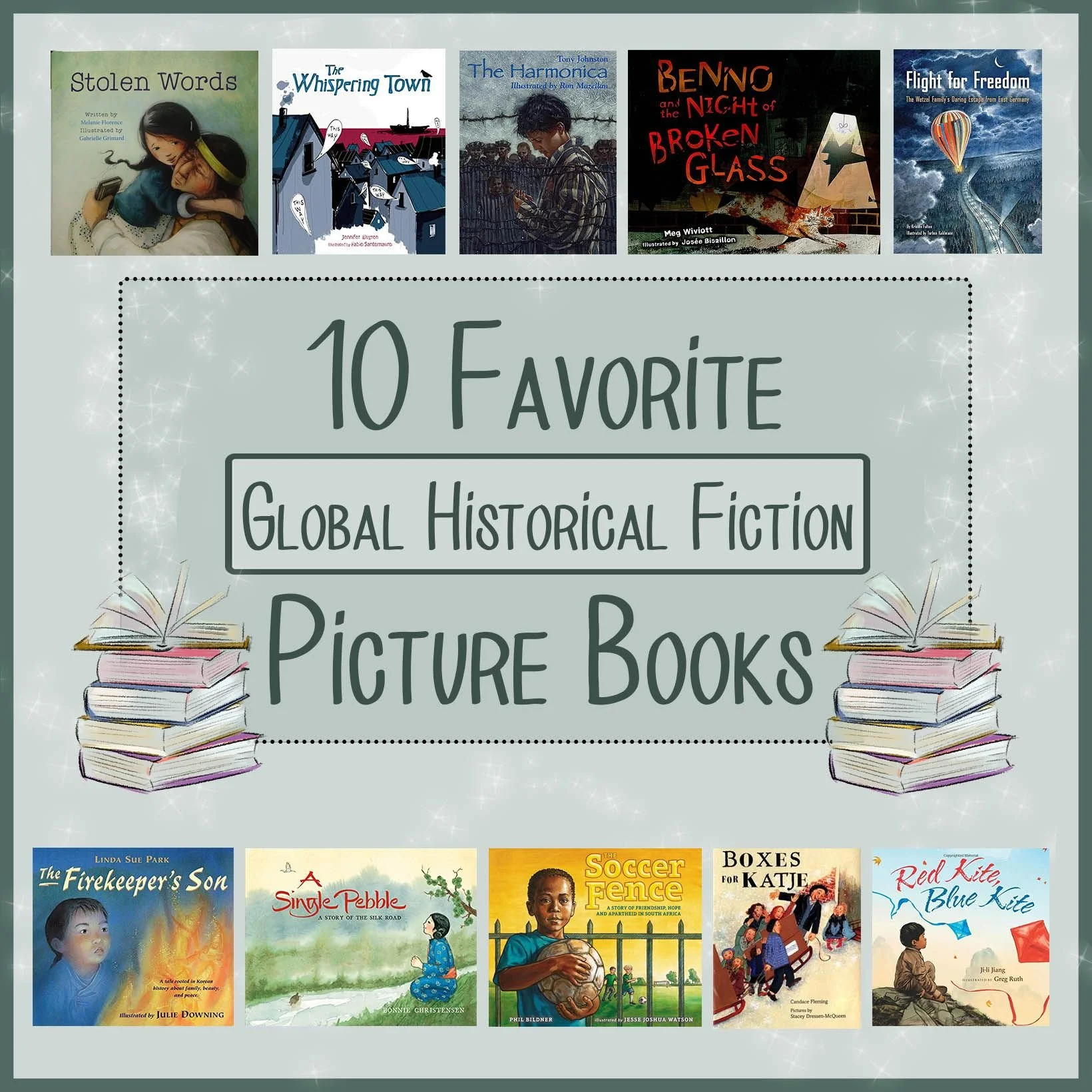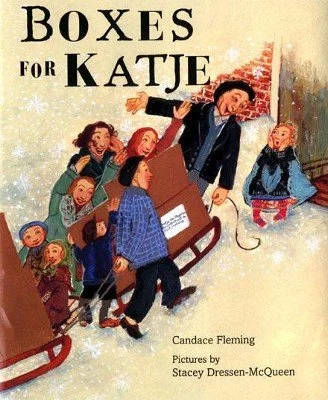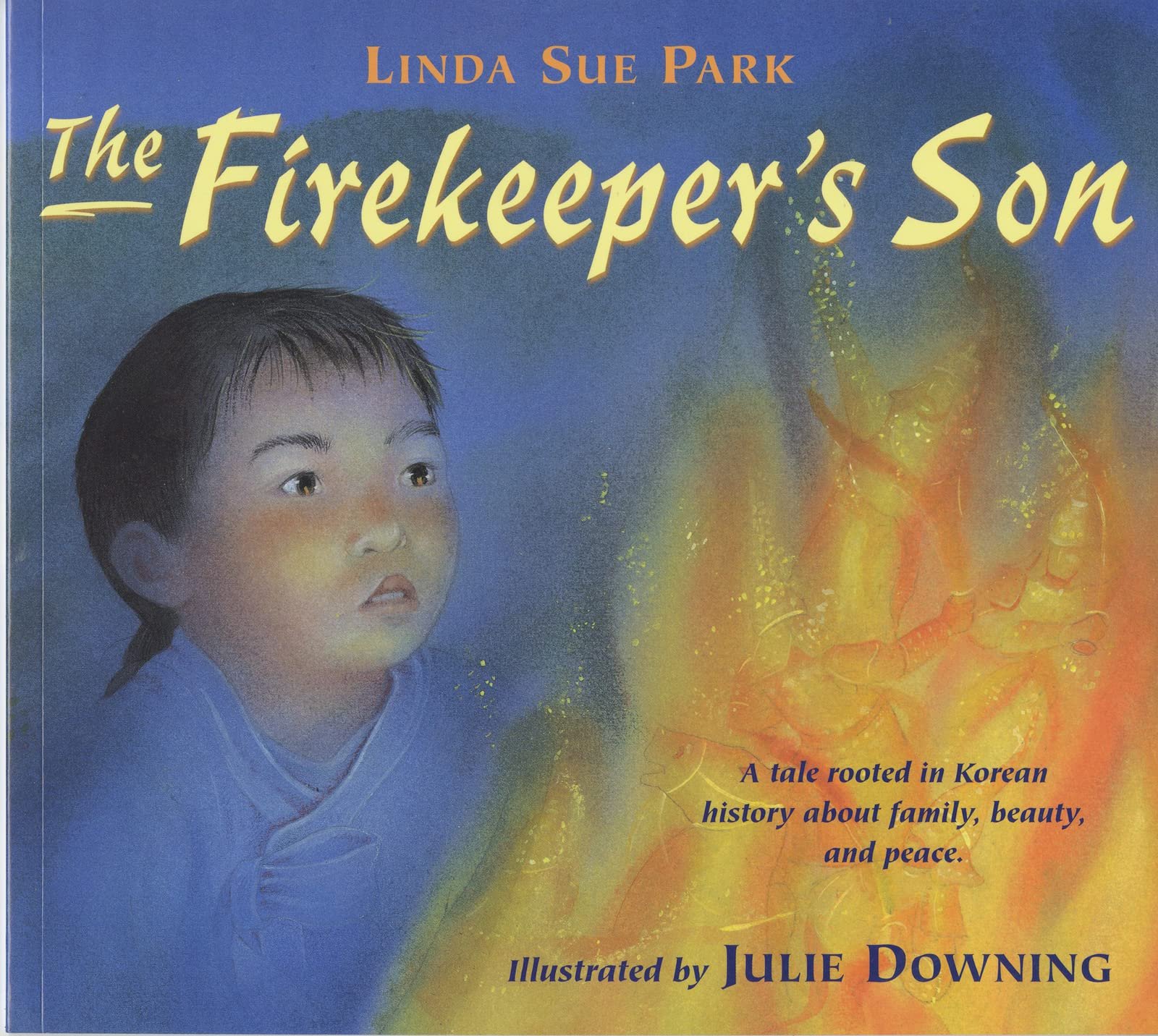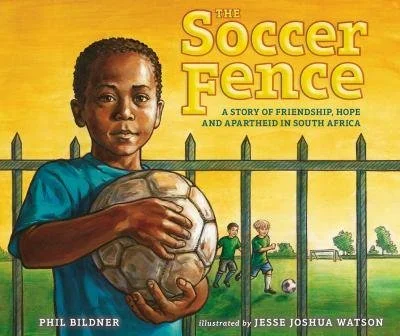10 Favorite Global Historical Fiction
Stories help bridge cultural and historical divides to recognize our shared humanity, and picture books are one of the most powerful ways to do that. With limited text and a focus on illustration and emotion, global historical fiction books allow readers to connect with the many people who have come before. In this way, global historical fiction brings us far beyond the pages of history textbooks, into the lives and hearts of people all over the world.
Red Kite, Blue Kite by Ji-li Jiang, illustrated by Greg Ruth
Tai Shan and his Baba fly their kites, red and blue, high in the sky from the roof of their home. When the Chinese Cultural Revolution begins, Tai Shan’s baba is taken away to a labor camp, and Tai Shan must live on a neighboring farm. While apart, Baba and Tai Shan communicate their love for each other with their kites– high in the sky, red and blue and free. Based on a true story, this book is an excellent introduction to the Chinese Cultural Revolution of the 1960s-1970s.
Stolen Words by Melanie Florence, illustrated by Gabrielle Grimard
When a girl asks her grandfather how to say a word in Cree, he can’t answer her question. Growing up in a residential school, his Cree words were stolen, replaced by English until he couldn’t remember them anymore. After wiping her grandfather’s tears, the girl figures out a way for him to find them again. This story illustrates an important part of the tragic history faced by many indigenous American families.
Benno and the Night of Broken Glass by Meg Wiviott, illustrated by Josée Bisaillon
In his Rosenstrasse apartment building, Benno the cat knows where to find head scratches, extra scraps, and a good nap. But when the brown shirts show up, kind words disappear, along with the extra table scraps. On the Night of Broken Glass, brown shirts loot shops, destroy property, and drag people away, never to be seen again. And while Benno’s routines continue, life as it was is gone forever. Benno’s eyes give a fresh perspective on the events that led to and resulted from the terrible Night of Broken Glass in November 1938.
Boxes for Katje by Candace Fleming, illustrated by Stacey Dressen-McQueen
After WWII, food and supplies are in short supply in Katje’s town of Olst, Netherlands. When she receives an unexpected package from America with soap, socks, and chocolate, she writes a thank-you note to her new friend Rosie. Rosie, her mother, and then her whole town, respond to Katje’s letter of gratitude with needed supplies and treats. Finally, Katje and her mother think of the perfect way to truly say thank you. This story is a reminder of our shared humanity and the power of generosity and gratitude in the face of hardship.
A Single Pebble by Bonnie Christensen
As her father leaves home to trade on the Silk Road, Mei hands him a pebble. She begs him to deliver the pebble to a child at the end of the road. This story follows the 4000 mile journey of Mei’s pebble as it passes from hand to hand, east to west, and finally into the hands of a young boy at the far end of the road. This story is a wonderful introduction to the rich history of the Silk Road, the ancient trade routes that once connected Asia to the Middle East and the Mediterranean.
The Firekeeper’s Son by Linda Sue Park, illustrated by Julie Downing
Sang-hee longs to see the king’s soldiers—but they will only come in a time of danger. Sang-hee’s father has an important job– to light the fire on their mountain that alerts the firekeepers on subsequent mountains, all the way to the palace. With the fires lit, the king knows all is well in the kingdom. One night, Sang-hee’s father is injured, and Sang-hee must light the fire himself. But he faces a difficult choice: light the fire to communicate peace, or leave it unlit so the soldiers will come? This story is a fantastic, easy-to-understand portrayal of the complicated system of fire-messages used for hundreds of years in Korea.
The Whispering Town by Jennifer Elvgren, illustrated by Fabio Santomauro
When Anett’s mom asks her to bring breakfast to the basement, Anett knows why: a Jewish boy and his mother are hiding there. When the clouds clear, they will sneak to the harbor and take a boat to Sweden. But when Nazi soldiers come door to door looking for them, Anett’s family knows their new friends must leave that night, cloudy skies and all. With the guiding help of whispering townspeople, the boy and his mother make their way in the darkness to the harbor. A tribute to the many Danish towns that harbored Jews during the Holocaust (including a fishing town that led people to freedom by whispering directions at night!), this story is a beautiful reminder of humanity and hope.
The Soccer Fence by Phil Bildner, illustrated by Jesse Joshua Watson
Soccer-loving Hector dreams of playing on the big green field near his mother’s work, but thanks to their country’s history of apartheid, the white boys who play there never give him a chance. When South Africa hosts the African Cup of Nations soccer tournament, new president Nelson Mandela sees an opportunity to unite his nation– and Hector’s soccer dreams can finally come true. With end pages including historical information and a timeline of apartheid, this book is a fantastic introduction to the history of apartheid and the power of sports to bring people together.
The Harmonica by Tony Johnston, illustrated by Ron Mazellan
When the Nazis take a young boy from his home, they tear him from his parents and everything he knows. His only solace is a harmonica, given to him by his father. When a cruel Nazi officer hears him play, he insists that the boy play for him each night, despite the boy’s shame and disgust. But the boy soon learns that he’s not only playing for the officer to hear. Based on a true story of a Holocaust survivor, The Harmonica’s lyrical text and beautiful illustrations highlights a glimmer of hope found in the darkest of circumstances.
Flight for Freedom by Kristen Fulton, illustrated by Torben Kuhlmann
In Cold War-era East Germany, Peter’s parents plan a dangerous escape. Little by little, they gather bolts of fabric and extra oil– until one night, Peter and his family climb into a hot air balloon! But will their sacrifice and courage successfully take them over the Berlin Wall? With beautiful illustrations and end notes with more information about the Cold War, the Berlin Wall, and the many escape attempts made by desperate citizens, this book is a great resource for global historical literacy.











